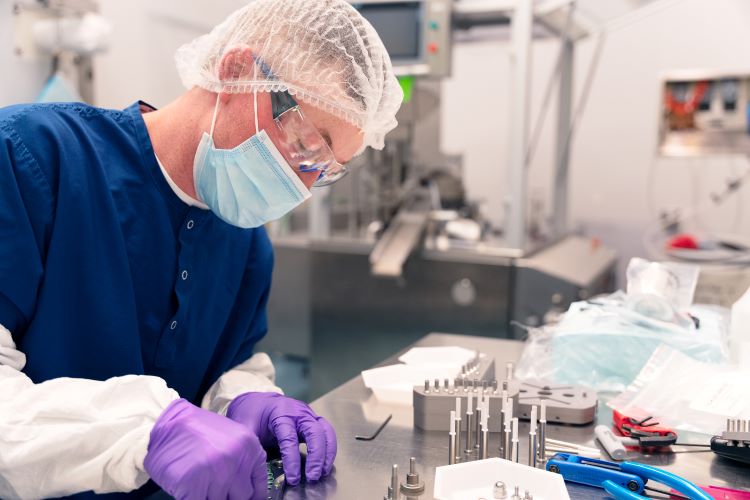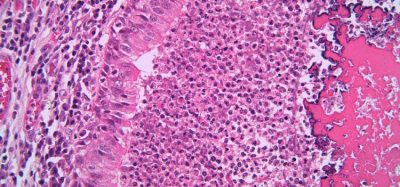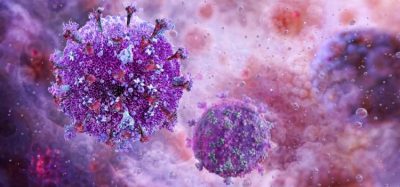Clinical success begins early for small molecule drugs
Posted: 31 October 2022 | Abhijeet Sinha (Lonza Small Molecules) | 1 comment
First-in-human clinical verification is one of the first critical milestones in drug development. Abhijeet Sinha, Senior Scientist at Lonza Small Molecules, exemplifies the imperative of solving drug development challenges in the early phases.


Phoito credit: Lonza
The race to the first-in-human (FIH) milestone is underscored by the rise in expedited programmes such as Fast Track designation, Accelerated Approval, Priority Review designation and Breakthrough Therapy designation.1 Within these programmes, the ability to identify and solve challenges in the early stages with agility and flexibility is critical to successful early clinical trials that will help advance drugs from late stage through product launch. Ensuring that small and emerging pharmaceutical companies have access to expertise and resources is especially important. Today, two-thirds of small molecule drugs in the early-stage pipeline are pioneered by small and emerging pharma companies, which illustrates the critical role these companies play in innovating new medicines to address unmet clinical needs.2 However, smaller companies may have limited in-house resources and lack the capabilities to solve the challenges to meet important milestones during early-stage development.
The major challenges faced today by the pharmaceutical industry working with small molecules is poor solubility and bioavailability. Solving this before the clinical stage ensures the viability of compounds…”
Addressing bioavailability challenges in the first phases of development is essential to help create the most robust product profile and increase the potential for success as small molecule drugs move to the clinic.
The myriad of challenges in these early stages include addressing bioavailability and solubility issues, as well as ramping up the production of drug substances and drug products. These steps require a solid scientific understanding of the target drug product profile as well as the appropriate technology and expertise to meet that target efficiently and effectively. Addressing bioavailability challenges in the first phases of development is essential to help create the most robust product profile and increase the potential for success as small molecule drugs move to the clinic. Similarly, a comprehensive plan to scale up manufacturing is important to ensure there is sufficient drug product to meet FIH trial demands and timelines. These challenges are best addressed at the early stages as it keeps the development timeline on track.
As the industry focuses on accelerating all aspects of drug discovery and development, it is increasingly important to reduce the timeline from initial concept to FIH clinical trials. A robust integrated strategy to address these challenges can help pharmaceutical companies prepare for early clinical trials with as little risk as possible and help optimise a clear path to commercialisation.
Addressing bioavailability challenges for small molecule drugs
The major challenges faced today by the pharmaceutical industry working with small molecules is poor solubility and bioavailability. Solving this before the clinical stage ensures the viability of compounds and initiates the formulation process”
The major challenges faced today by the pharmaceutical industry working with small molecules is poor solubility and bioavailability. Solving this before the clinical stage ensures the viability of compounds and initiates the formulation process. A synergistic, integrated approach to developing drug substance, solid form selection, drug formulation and product can be hugely beneficial when working under accelerated timelines.
The processes intrinsic to these steps require holistic solutions that also include enhancing oral bioavailability. When early-phase activities are conducted under an integrated programme, it affords a more efficient means of identifying and addressing challenges in every stage of development, essentially nipping potential issues in the bud and saving time and cost along the way. As such, selecting the appropriate solid form not only improves isolation of a stable form with optimal properties for downstream handling of the drug substance, but also directly and seamlessly feeds into pre-formulation and formulation activities to achieve improved oral bioavailability. For example, comparing the salt forms, polymorphs and cocrystals coming out of the solid form work to other bioavailability-enhancing formulation approaches such as micronisation and amorphous solid dispersions (ASDs).
The bioavailability challenge can be attributed to the fact that an increasing number of active pharmaceutical ingredients (APIs) are becoming more sophisticated and complex due to refined R&D. For instance, many small molecule drugs in today’s pipeline target receptors that are buried in hydrophobic domains, which means that the APIs themselves are less water soluble. For drug programmes with orphan or break-through designations, it is important to solve this issue quickly and early in the programme.
There are several technologies that have been developed for improving bioavailability of small molecules. The three most common technologies used for commercially viable compounds are:
- particle size reduction (jet milling),
- salts/cocrystals, and
- amorphous solid dispersions, or ASDs.
Jet milling/particle-size reduction increases bioavailability of compounds that have slow dissolution rates while keeping the compound in the crystalline state, although the bioavailability enhancement in this case is not high.
In contrast, salts/cocrystals offer a far higher solubility and/or bioavailability enhancement. An ionisable functional group is required for salts, whereas a hydrogen bonding group is needed for cocrystals. Multiple salt- and cocrystal-formers offer a wide variety of options in terms of searching for the ideal crystalline form of the drug with optimum performance attributes.
ASD formulations are manufactured using either spray drying or hot-melt extrusion, depending on physicochemical properties.”
ASD formulations are manufactured using either spray drying or hot-melt extrusion, depending on physicochemical properties. ASDs trap the compound in an amorphous form that is more readily dissolved than the crystalline state, and often provides sustained solubility via use of colloidal polymers or surfactants.
Choosing the right bioavailability-enhancing technology is central to the creation of formulation strategies. It requires a robust understanding of the target product profile. The characterisation resulting from this process is also required to inform the scaleup of drug substance and product, a separate milestone in these initial stages of drug development.
Scaling up small molecule drugs manufacturing
Alongside enhancing the bioavailability and solubility of small-molecule compounds, small and emerging pharma companies must also ensure they are able to produce enough drug substance and finished product to cover current and future clinical phases. Sufficient supply for initial clinical trials is a pivotal point in the drug development process, as securing clinical trial participants takes time and when a trial is fully enrolled the drug substance must be ready. If not, a competitor will fill the void.
Understanding the formulation problem statement and deciding the best approach to meet the target drug product profile will help clarify effective technology selection as well as the optimal development processes.”
The paramount element to consider is that pharma companies and their development partners must have detailed theoretical and working knowledge of enabling processes and formulation technology. Understanding the formulation problem statement and deciding the best approach to meet the target drug product profile will help clarify effective technology selection as well as the optimal development processes. This requires an efficient, systematic approach that considers a drug’s physical and chemical properties and the targeted patient population’s requirements.
Furthermore, an understanding of enabling process and formulation technology also helps to create a phase-appropriate manufacturing strategy. As different phases of development require varying amounts of drug substance and product, companies must demonstrate the ability to robustly scale that formulation and process for clinical and commercial manufacture.
Creating an integrated strategy to develop both substance and product is essential to help design the most efficient and simple route to scale up for the clinic. This enables robust manufacturing processes to be established earlier on, with the goal to trim inefficiencies early when they are identified. This prevents them snowballing over the different stages and ensures a close eye on process performance and quality. A study from Tufts Center for the Study of Drug Development found that a single-source outsourcing model shortens the drug development cycle by up to 14 weeks while increasing financial gains by up to $45 million.3 This is important to consider under accelerated timelines, as having a single integrated partner can save time and reduce complexity, risks and costs associated with managing several outsourced manufacturers.
Looking ahead to later stages of development
“Given the combination of accelerated regulatory approvals with increasing numbers of smaller companies looking to commercialise their own small molecule drugs, early-phase development can become complex.”
Managing accelerated approvals and timelines is essential to master, especially for smaller companies who have drug programmes with orphan or break-through designations. Given the combination of accelerated regulatory approvals with increasing numbers of smaller companies looking to commercialise their own small molecule drugs, early-phase development can become complex. An integrated strategy to solve challenges early in the development cycle can help create an efficient and successful product launch.
Importantly, pharma companies and their strategic development partners must work closely to identify key problem statements early on, to arrive at robust processes and compositions for the entire drug development programme – beyond just the early stages. Technical competence, collaboration and flexibility are vital qualities in a productive partnership. These are critical to comprehensively address challenges in an agile fashion by leveraging knowledge of the drug substance, solid form, drug formulation and product. This is only made easier and more efficient with a synergetic approach: when companies and their development partners collaborate from step one to commercialisation, they can leverage each stage to make the next more efficient for a successful clinical and commercial manufacture.
About the author
Abhijeet Sinha is a Senior Scientist in Solid Form Services at Lonza’s site in Bend, Oregon, US, where he works on product development and internal R&D in pre‑formulation, polymorph, salt and cocrystal screens. Abhijeet joined Lonza in 2020 from Kansas State University’s Chemistry Department, where he served as a Senior Scientist and Director of the university’s X-ray crystallography facility. His expertise includes molecular modelling, in silico screening of APIs and polymorphs, particle engineering, industrial crystallisation, organic and inorganic chemistry, and X-ray crystallography. He earned his BSc and MSc degrees in chemistry at Delhi University and received a PhD in inorganic chemistry from Kansas State University. After graduation, Abhijeet completed two years of postdoctoral work at University College Cork mapping the solid-form landscape of APIs for the pharmaceutical industry.
References
- Batta A, Kalra BS, Khirasaria R. Trends in FDA drug approvals over last 2 decades: An observational study. J. Fam. Med. Primary Care. (2020), 105-114
- Internal Lonza Research
- The Tufts Center for the Study of Drug Development (CSDD). Assessing the Economics of Single-Source vs Multi-Vendor Manufacturing. 2017
Related topics
Active Pharmaceutical Ingredient (API), Clinical Trials, Drug Development, Drug Manufacturing, Drug Safety, Formulation, Manufacturing, Outsourcing










Think about nanonization of small molecules to escalate pitfalls.